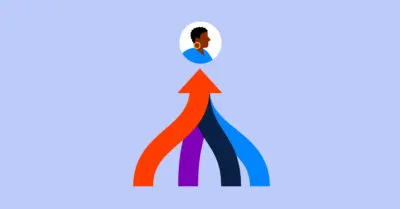20 Jan 2025
Expert panel: Driving success with a customer centric culture

In the third week of Customer Centricity Month, we were thrilled to welcome our expert panellists Sarah Lyons, Chief Marketing Officer at Parmenion, Germaine Faulker CX & Service Officer at CAA and Jonti Dalal-Small, Behavioural Science Lead at Sopra Steria Next.
-
Lauren Howells
Marketing Director
Lauren Howells
As part of Customer Centricity Month 2024, our expert panellists discussed how organisations can ‘drive success with a customer centric culture’.
Our panelists were:
- Germaine Faulkner, Customer Experience & Service Design Lead – Civil Aviation Authority
- Sarah Lyons, CMO – Parmenion
- Jonti Dalal-Small, Behaviour Science Lead – Sopra Steria Next
Building a customer centric culture
Placing the customer at the centre of your decisions, while also considering the needs of colleagues and shareholders, fosters a more enjoyable work environment. This approach helps employees feel they are contributing to a greater purpose, enhancing motivation and engagement beyond just tasks and pay. This is crucial for any business and fundamentally important.
One reason organisations struggle to become more customer-centric is that they haven’t thoroughly considered how this approach aligns with their purpose, goals, and strategy. While frontline employees may be passionate about providing excellent customer service, they often lack internal support from the organisation. Organisations need to be customer-centric, bringing energy and strategic intent to connect the dots and deliver valuable, useful, and usable services. This focus on customer-centricity ties into the broader concept of culture, which, while intangible, is crucial for success.
It’s all starts internally… The culture challenge within an organisation
The panel explored how ingrained patterns of behaviour that have developed over the history of the organisation, shaped by its norms, functions, and the mindsets of its people. These behaviours exist beyond formal processes and posters on walls; they are deep-rooted actions and attitudes.
These behaviours can either complement a thriving, healthy culture or create a negative environment where there’s a disconnect between stated policies and actual behaviour. The true culture of an organisation is revealed by how people spend their time and the organisation’s money. Are they genuinely focused on customers, or just paying lip service? It’s these deep behaviours and where people’s focus and attention lie that truly define the culture.
Culture is set by example in your organisation
If, as business leaders, you observe behaviours in your teams or across your business that are contrary to what you desire, the first place to look is at yourself. Often, your own behaviours are mirrored back to you by your teams.
People are very perceptive and can sense the disconnect between words and actions, even if they don’t explicitly recognise it. This cognitive dissonance can lead to disengagement. Therefore, it’s crucial for the leadership team to set the right example and be clear about expectations. Consistency in behaviours across the organisation starts from the top and is reinforced by influential people within the company. You can’t simply opt out and say it happens elsewhere; leadership must be proactive in setting and maintaining the desired culture.
The employee experience is vital to the customer experience
Our panellists explored the benefit of having better internal conversations, not just with customers through user research, but also with colleagues to understand their needs and pain points. By both groups, we ensure a clear connection between our actions and the happiness of our colleagues, which in turn enhances customer experience. This approach helps colleagues feel more engaged and understand their contribution to the organisation’s success.
Be curious about your customers
Be curious about what our customers need, what they expect, and how we can make a difference. I once worked with someone who emphasised the importance of understanding unarticulated customer needs. In complex situations, customers often express desired outcomes rather than their actual needs. The skill lies in dissecting these outcomes to uncover the true needs.
To effectively drive culture change, it’s crucial to truly listen to people and understand any resistance. Just as we empathise with customers, we need to empathise with our colleagues to understand their perspectives. Often, messages are delivered top-down, but it’s equally important to engage from the bottom-up to sustain culture change. This complementary approach ensures that everyone is on board and that the change is lasting.
Where to begin with culture change
- Identifying customer pain points.
- Understand employee pain points.
- Combine customer data such as Trustpilot reviews and social media complaints.
- Gathering and analysing data from colleagues through conversations and surveys to identify common themes and acting on them.
In conclusion
It’s important to embed accessible and understandable metrics across the organisation to ensure everyone takes ownership of the data.
Identify the anchor points: If you can anchor the cultural shift towards customer centricity in the deeply embedded beliefs already present in the organisation, it gives you a significant advantage. This approach allows you to build upon existing ideas and language that people already understand, making the transition smoother and more effective.
It’s important to listen to colleagues’ pain points and stories, but we must also demonstrate that we’re acting based on their feedback. This helps them believe that real change is happening. When colleagues see that their input leads to improvements, they are more likely to speak up about issues affecting their ability to deliver a good customer experience and contribute to shifting the organisation’s culture.
If you missed this talk, you can watch ‘Expert panel: Driving Success with a customer centric culture’ on our YouTube Channel as part of our Customer Centricity Month 2024 playlist, where you can also watch the rest of the talks from the event.


